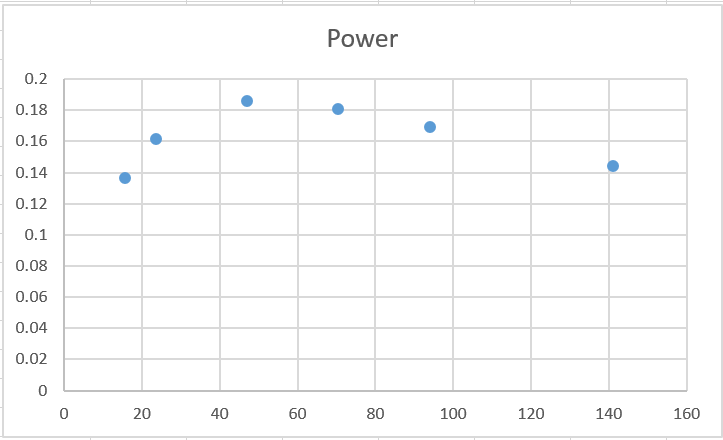Ok, so I have been performing a lab experiment in class involving resistors. We were asked to set up 3x 47Ω resistors in 6 different combinations in a circuit with a 6V power supply. We also attached a resistor of unknown resistance (later revealed to also be 47Ω). An ammeter and voltmeter were also connected.
I did the experiment, recording my results in this table:

The 70.5, 23.5, and 15.7 circuits were where resistors are in series, but given I've calculated the resistance there shouldn't be any difference.
We were then asked to draw a graph:

Using my knowledge of the Power & Resistance equations, I would expect this to be a straight line graph, but I cannot think of any reason the graph has this unusual shape. Is it because of the 'unknown' resistor? And if so, why?

